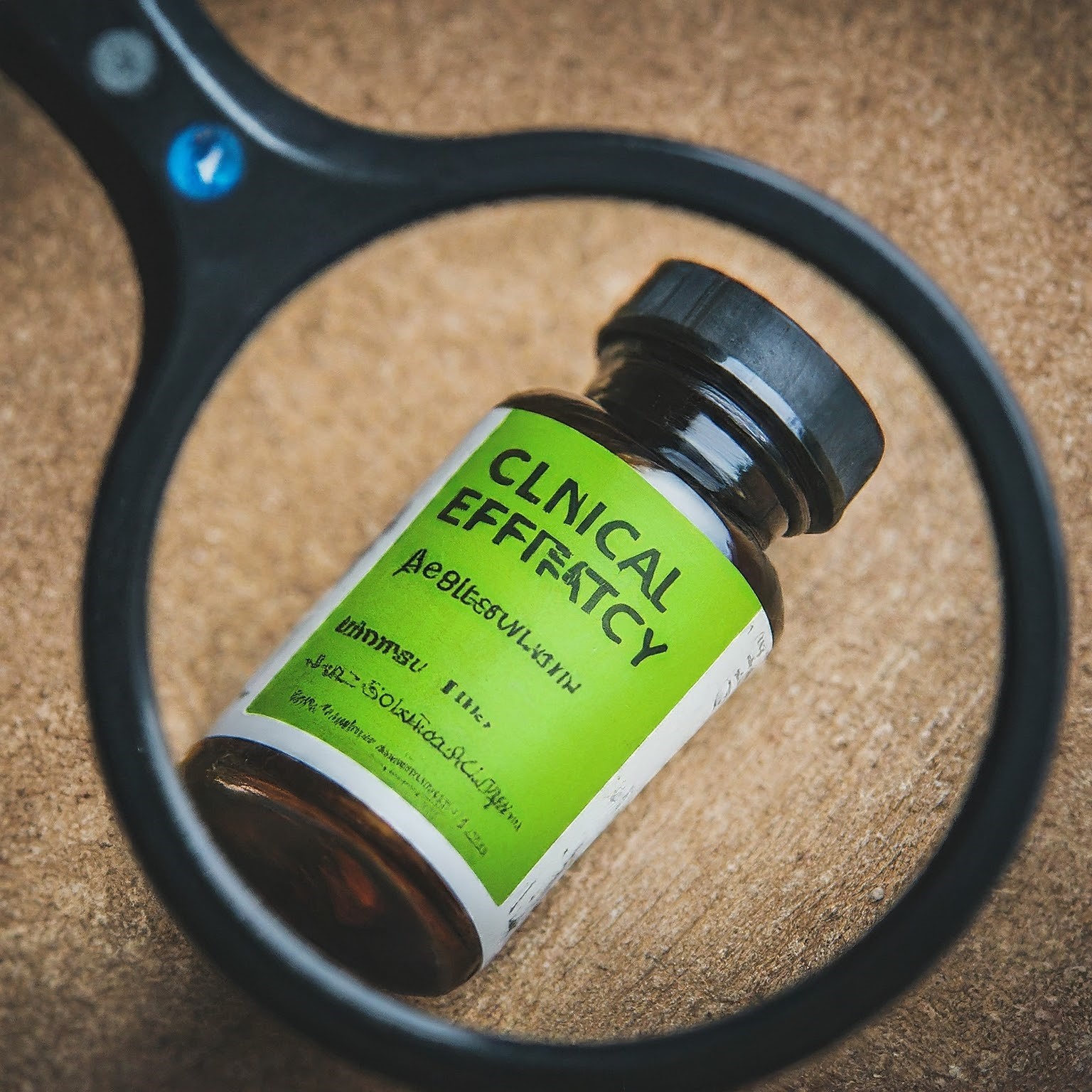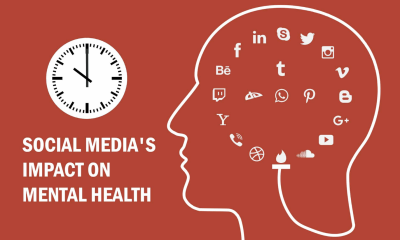health
Clinical Efficacy: Key to Wellness Product Choice

Impact of Clinical Efficacy on Wellness Product Choices
In an age where wellness and health have taken center stage in the consumer market, the plethora of available products can be overwhelming. From dietary supplements to skin care products, and holistic therapies to fitness gadgets, the options are vast. However, amidst this abundance, the discerning consumer is increasingly focused on one pivotal factor: clinical efficacy. This article explores how the proven effectiveness of wellness products influences consumer choices and why it matters in the broader context of health and wellness.
Understanding Clinical Efficacy
Clinical efficacy refers to the ability of a product or treatment to provide the intended beneficial effects as evidenced in controlled, clinical settings. It is a critical benchmark in the development and marketing of medical and wellness products. The assessment of clinical efficacy is typically based on rigorous research methodologies, including randomized controlled trials (RCTs), cohort studies, and meta-analyses.
The Growing Demand for Evidence-Based Wellness Products
In recent years, there has been a significant shift towards evidence-based medicine and, by extension, evidence-based wellness products. Consumers are becoming more educated and discerning about the products they use, driven by an increased access to information and a greater awareness of health matters. They are scrutinizing what they consume, not just for the sake of personal wellness, but also to ensure that they are making informed choices based on scientific backing rather than merely anecdotal evidence.
The Role of Clinical Efficacy in Consumer Decision-Making
- Trust and Credibility: Products that boast proven clinical efficacy are often viewed as more trustworthy and credible. In a market saturated with claims of health benefits, products backed by solid, scientific evidence stand out. This trust is crucial in building a loyal customer base.
- Regulatory Approval and Market Access: Many jurisdictions have stringent regulations governing the marketing and sale of wellness products. Demonstrating clinical efficacy is often a prerequisite for obtaining the necessary approvals from regulatory bodies such as the FDA in the United States or the EMA in Europe. Products that meet these rigorous standards are more likely to be accepted and preferred by consumers.
- Personalization of Health Solutions: With advancements in technology, particularly in the fields of genomics and biotechnology, there is a growing trend towards personalized health solutions. Clinical efficacy plays a significant role in this as it helps consumers choose products that are not only generally effective but also specifically beneficial for their individual health needs.
- Cost-Effectiveness: In an era where healthcare costs are continuously rising, consumers are increasingly considering the cost-effectiveness of wellness products. Products proven to be clinically effective are often perceived as offering better value for money, as they are more likely to deliver the promised benefits and thus reduce the need for additional treatments.

Picture by: Yandex.com
Challenges in Evaluating Clinical Efficacy
While the importance of clinical efficacy is clear, evaluating it is not without challenges. One major issue is the variability in the quality of clinical trials. Not all studies are created equal, and the methodologies used can significantly affect the outcomes and interpretations of efficacy. Moreover, some wellness products, particularly those derived from traditional practices or natural products, may not have been subjected to the same level of rigorous scientific scrutiny as pharmaceutical products.
Another challenge is the potential bias in research, often stemming from conflicts of interest where studies are funded by product manufacturers. This can lead to results that are skewed in favor of the product, thus misleading consumers.
The Future of Wellness Products: Transparency and Regulation
Given these challenges, there is a growing call for greater transparency and regulation in the wellness product industry. Consumers are demanding clearer information about the scientific studies behind products, as well as the outcomes of these studies. Regulatory bodies are also tightening their requirements for the demonstration of clinical efficacy before products can be marketed to the public.
In conclusion, the impact of clinical efficacy on wellness product choices is profound. It not only influences consumer behavior and product popularity but also guides the regulatory frameworks governing these products. As the wellness industry continues to grow, the role of clinical efficacy will likely become even more central, ensuring that products not only promise to enhance health and wellbeing but are also proven to do so. This alignment between consumer expectations, regulatory standards, and product offerings is essential for the sustained growth and credibility of the wellness industry.
health
Rehab Centre in Muzaffarnagar: Lifeline Recovery and New Beginnings

Introduction
Overcoming addiction is not just about quitting drugs or alcohol; it’s about rebuilding a healthy and meaningful life. This process requires not only willpower but also professional support, compassionate care, and the right environment. That’s where a rehab centre in Muzaffarnagar plays a crucial role. Whether you’re battling alcohol dependence, drug addiction, or seeking long-term mental wellness, a reliable rehab centre can be the turning point in your journey.
Understanding the Need for Rehabilitation
Addiction affects the brain, behavior, and overall well-being of a person. It does not discriminate—people from all walks of life can find themselves in its grip. Substance abuse can result in:
- Physical health deterioration
- Relationship breakdowns
- Job loss or academic failure
- Legal troubles
- Psychological disorders such as depression or anxiety
A rehab treatment centre in Muzaffarnagar provides a structured and supportive environment to help individuals recover from these consequences and re-establish control over their lives.
What Does a Rehab Treatment Centre Offer?
A reputable residential rehab centre in Muzaffarnagar typically includes a multi-disciplinary team of professionals—psychiatrists, psychologists, medical doctors, addiction counselors, and wellness coaches—working together to ensure holistic recovery. Their services include:
1. Assessment and Diagnosis
The treatment begins with a comprehensive evaluation of the patient’s condition, substance use history, and co-occurring mental health disorders.
2. Detoxification
The medical detox process safely manages withdrawal symptoms, which can range from mild to life-threatening depending on the severity of addiction.
3. Individual Counseling and Therapy
Therapies like CBT (Cognitive Behavioral Therapy), DBT (Dialectical Behavior Therapy), and motivational interviewing help individuals address the underlying causes of their addiction.
4. Group Therapy and Peer Support
Sharing experiences with others fosters emotional bonding and reduces the sense of isolation during recovery.
5. Family Therapy
Involving family members in therapy is crucial to restoring trust and educating them about how to support their loved one’s recovery.
6. Relapse Prevention and Aftercare
A robust rehab treatment centre in Muzaffarnagar ensures continuity of care through follow-up sessions, alumni meetings, and 24/7 helplines.
The Growing Need for Alcohol Rehabilitation Centre in Muzaffarnagar
Alcohol addiction is one of the most common yet overlooked forms of substance abuse in India. People often hesitate to seek help due to societal stigma, denial, or lack of awareness. However, prolonged alcohol dependency can lead to liver damage, memory loss, emotional instability, and even fatal withdrawal symptoms.
An Alcohol Rehabilitation Centre in Muzaffarnagar offers a safe space for detox, medical care, emotional healing, and skill-building to reintegrate into society. The use of evidence-based therapies and personalized care plans ensures that individuals are not just sober but empowered to stay that way.
Drug De-addiction Centre in Muzaffarnagar: Fighting the Rise of Narcotic Abuse
The rise in drug abuse among youth and adults alike has made Drug de-addiction Centres in Muzaffarnagar a necessity. From opioids and cannabis to prescription drugs and synthetic substances, addiction patterns are evolving, and so are treatment methods.
Key highlights of a quality drug de-addiction centre include:
- Safe and confidential treatment plans
- Gender-specific programs if needed
- Dual-diagnosis support for mental illness
- Daily structure with physical, mental, and emotional activities
Most importantly, these centers focus on addressing the root cause of drug dependency and not just the symptoms.
Why Choose a Residential Rehab Centre?
A residential rehab centre provides an immersive environment away from triggers and toxic influences. This setting helps patients:
- Focus entirely on healing
- Avoid relapse during the critical early recovery phase
- Engage in daily therapy and skill development
- Build discipline, routine, and motivation
For many, staying in a treatment centre in Muzaffarnagar for 30 to 90 days creates the foundation needed for a successful and lasting recovery.
What Makes Muzaffarnagar an Ideal Location?
Muzaffarnagar has witnessed the growth of several modern and well-equipped rehab centers offering quality addiction treatment. Here’s why the city is becoming a hub for recovery:
- Proximity to major cities like Delhi, Meerut, and Saharanpur
- Peaceful and green environment, ideal for mental healing
- Affordable treatment costs compared to metropolitan areas
- Access to trained medical professionals and holistic wellness coaches
Many families prefer to choose a rehab centre in Muzaffarnagar because it offers privacy, focused care, and cost-effectiveness.
Key Features to Look for in a Rehab Centre
When searching for a rehabilitation facility, consider these essential aspects:
- Licensing and accreditation
- Qualified and compassionate staff
- Clean, safe, and structured environment
- Customized treatment options
- Positive testimonials and success stories
- Aftercare planning and relapse prevention
A good center doesn’t just treat addiction—it transforms lives.
Moving Toward Recovery: You’re Not Alone
Deciding to seek help is a sign of strength. Whether you’re dealing with alcohol dependence or drug addiction, the right support system can lead to a brighter, healthier future. A professional rehab treatment centre in Muzaffarnagar offers the tools, care, and motivation needed to break free from addiction and start a new chapter.
Aftercare and Relapse Prevention
Recovery continues after leaving the centre. Effective rehab centre Muzaffarnagar programs include:
- Outpatient Counselling: Ongoing therapy sessions to tackle new challenges.
- Support Groups: Local meetings for alcoholics and addicts (like AA and NA).
- Life Skills Workshops: Job training, financial planning, and relationship-building.
- Check-Ins and Follow-Up: Regular calls or visits to monitor progress.
Strong aftercare ensures you build a stable, substance-free life once you return home.
How to Choose the Right Centre
To find your perfect fit in Muzaffarnagar, consider:
- Accreditations and Licenses: Verify government and healthcare board approvals.
- Treatment Philosophy: Ensure their approach matches your values—medical, holistic, or blended.
- Program Duration: Options range from 30-day detox to 90-day residential stays.
- Cost and Insurance: Check pricing, payment plans, and insurance coverage.
- Client Testimonials: Read reviews and ask for success stories from past residents.
Visiting centres in person and speaking with staff helps you make a fully informed decision.
Success Stories: Hope and Inspiration
Real-life recoveries show the power of proper treatment. In Muzaffarnagar, former residents share how a rehab centre changed their lives:
- Ravi’s Journey: From daily alcohol dependence to managing stress through yoga and group therapy.
- Neha’s Triumph: Overcoming prescription drug addiction with personalised CBT and career coaching.
- Amit’s New Start: Regained family trust after relapse prevention workshops and alumni support groups.
These stories remind us that recovery is possible with the right help and perseverance.
Conclusion
Addiction recovery is a journey, not a destination. It takes time, courage, and continuous effort. The good news? You don’t have to walk this path alone. With the help of a compassionate and professional treatment centre in Muzaffarnagar, you can reclaim your life and rediscover your true self.
Whether you’re looking for a drug de-addiction centre, an alcohol rehabilitation centre in Muzaffarnagar, or a full-time residential rehab centre, support is available—and recovery is possible.
health
High-Quality Surgical Instruments for Emergency Surgery

Introduction
Emergency surgeries happen when someone’s life or health is in serious danger and doctors must act quickly. In these critical moments, surgeons need tools they can trust—strong, sharp, and precise. Using good-quality instruments helps them see clearly, work faster, and cause less damage to the body. That means patients heal sooner and have fewer problems after surgery, like infections. By choosing reliable, long-lasting tools, hospitals give surgeons the best chance to save lives when every second counts.
Precision and Performance in Critical Moments
Surgeons need tools that help them work very carefully. In an emergency, they must cut and stitch without hurting other parts of the body. Good-quality instruments stay sharp and fit comfortably in the hand. That means cuts are clean and stitches are neat. Cheap or dull tools can slip or force surgeons to push too hard. That can cause mistakes, which in emergencies like serious injuries or heavy bleeding can be dangerous. Strong metals, like the special stainless steel from Germany, give doctors better feel and control. With the right instruments, surgeons can work faster and more accurately—and patients heal sooner.
The Importance of Durability in Repeated Use
Emergency rooms are busy all day and night, and the tools get used over and over. If instruments aren’t made to last, they can wear out or break, even during an operation. That can slow things down and cost more money in the long run. Good-quality tools don’t rust, stay sharp after many uses, and handle hot steam cleaning without falling apart. Because they stay strong and reliable, doctors don’t have to stop in the middle of surgery to swap them out. This means operations go more smoothly, costs stay lower, and hospitals can help more patients faster.
Patient Safety Starts with Reliable Tools
The most important part of any surgery is keeping the patient safe. Cheap or low-quality tools might not get fully clean, could break during the operation, or might hurt tissues too roughly. This can lead to infections, slower healing, or even having to have another surgery. Good instruments are made under strict rules and use materials that work safely inside the body. Their design avoids tiny cracks where germs can hide. When tools are reliable, doctors can concentrate on helping the patient instead of worrying about equipment. In emergencies, having instruments you can trust is absolutely vital for the best results.
Enhanced Efficiency in Emergency Operating Rooms

Image by: Yandex.com
In an emergency, every second matters. Surgeons need tools that feel just right in their hands so they can move quickly and safely. Good instruments have the perfect weight and shape, so doctors can switch from cutting to stitching without fumbling. Working smoothly means patients spend less time under anesthesia, lose less blood, and heal faster. When tools don’t break or stick, the whole team can focus on helping the patient. And because surgeons practice with the same reliable set of instruments, they become really good at using them fast and confidently.
Cost-Effectiveness Over Time
While high-quality surgical tools may come with a higher initial investment, they are cost-effective in the long run. Inferior instruments may break, corrode, or require frequent replacements. In contrast, quality instruments offer longevity, reliability, and less downtime. They also reduce the risk of surgical errors that can lead to costly litigation or extended hospital stays. Healthcare institutions that prioritize quality over short-term savings find their patient outcomes improving, along with reduced operational costs. It’s a strategic choice that enhances both care delivery and the financial sustainability of surgical departments.
Supporting Complex Surgical Procedures
Emergency surgeries can be very tricky. Sometimes doctors need to fix the brain, repair the heart, or treat stomach injuries. For these delicate jobs, they use special tools like tiny scissors, grabbers, and holders. These instruments must be the exact right size and made from strong, safe materials. When tools are high quality, surgeons can work carefully around fragile parts without causing extra harm. In life-or-death situations, having the right instruments helps doctors do their best and gives patients the greatest chance to get better.
Reduced Risk of Instrument-Related Complications
One often overlooked factor in emergency surgery is the risk associated with low-grade instruments. These may break inside the patient’s body, lose their sharpness quickly, or even become misaligned. Such events can escalate a standard procedure into a critical situation. High-quality tools undergo rigorous testing and are less likely to present these issues. They meet international safety certifications and are trusted by top-tier hospitals and trauma centers. This reduces the need for secondary interventions and ensures patient trust in the healthcare system.
Compliance with International Medical Standards
Instruments used for emergency surgeries must comply with global health standards. Reputable manufacturers ensure their products meet ISO and FDA guidelines. This not only guarantees quality but also facilitates smoother audits, certifications, and accreditations for hospitals. Using approved instruments ensures legal protection, patient safety, and institutional credibility. To meet this demand, trusted suppliers like TSurgical Instruments offer a wide range of surgical tools that meet these international benchmarks.
Tailored Instruments for Specialized Emergency Surgeries
Different emergencies require different tools. For instance, eye-related trauma or injuries demand precise ophthalmic instruments that are specifically engineered for delicate tissues. In such scenarios, using the correct tool can prevent permanent damage or loss of vision. A growing number of medical centers now source specialized ophthalmic tools from reputable manufacturers such as those found in this professional-grade collection. These tools are designed for accuracy and control, allowing surgeons to perform with greater confidence in critical scenarios.
Ergonomics for Surgeon Comfort and Accuracy
Emergency surgeries can last for hours, and surgeon fatigue is a real issue. Ergonomically designed instruments help reduce hand fatigue and improve grip. This directly affects the surgeon’s ability to maintain steady, accurate movements over extended periods. Poorly designed instruments can lead to repetitive strain injuries and reduced surgical quality. In contrast, well-crafted tools support natural hand positions and reduce pressure points. For emergency surgeries that test physical and mental limits, ergonomic tools are not a luxury—they’re a necessity.
Maintaining Surgical Readiness
Hospitals must always be prepared for emergencies, and this includes having a stock of ready-to-use instruments. High-quality tools can be sterilized and stored without degradation, ensuring they’re always available and effective. Poor-quality tools may require frequent inspections and replacements, causing potential readiness gaps. Using dependable instruments means medical teams can mobilize immediately without second-guessing the state of their equipment. This operational preparedness is crucial, especially in mass casualty events or high-volume emergency departments.
Conclusion: Quality Tools Save Lives
In emergency surgery, there’s no margin for error. The speed, accuracy, and reliability of high-quality surgical instruments can mean the difference between life and death. Their role extends beyond the procedure—they ensure safety, efficiency, and optimal outcomes. For healthcare providers, investing in premium tools is an investment in patient trust and clinical excellence. Whether it’s trauma, ophthalmic injuries, or complex surgeries, the right tools empower medical professionals to perform at their best when it matters most.
health
Medicine for Humans with Distance Healing: Holistic Wellness

Medicine for Humans with Distance Healing: A New Path to Wellness
The modern world demands innovative approaches to health, and Medicine for Humans with Distance Healing offers just that. This powerful healing method connects people with energy practitioners remotely, helping restore physical, emotional, and spiritual balance—without the need for in-person interaction. As technology and wellness merge, Medicine for Humans with Distance Healing is becoming an essential solution for those seeking natural, accessible, and holistic care.
Understanding Medicines for Humans with Distance Healing
At its core, Medicine for Humans with Distance Healings is based on the principle that human energy can be guided and balanced from any location. Whether through Reiki, Pranic Healing, or other energy practices, this form of medicine taps into universal life force energy. It supports the body’s natural healing processes by clearing blockages, reducing stress, and harmonizing energy flow.
Benefits of Medicines for Humans with Distance Healing
One of the biggest strengths of Medicine for Humans with Distance Healings is its accessibility. You can receive care from the comfort of your home—ideal for those who are immobile, unwell, or in remote areas. The benefits include:
- Stress and anxiety reduction
- Improved sleep and energy level
- Emotional balance and mental clarity
- Relief from chronic pain and fatigue
- Spiritual growth and self-awareness
By working on the body’s energy field, Medicines for Humans with Distance Healings brings deep relaxation and holistic transformation.
How Medicines for Humans with Distance Healing Works
In a typical session of Medicine for Humans with Distance Healings, the practitioner connects with your energy field using intention, visualization, and specialized healing techniques. You don’t need to be physically present—the healing energy is transmitted through space and time. Clients often report feeling warmth, tingling, or a deep sense of calm during these sessions.
Who Should Try Medicines for Humans with Distance Healing?
Anyone experiencing stress, emotional imbalance, physical discomfort, or simply seeking spiritual connection can benefit from Medicine for Humans with Distance Healings. It’s especially helpful for:
- Individuals with limited access to healthcare
- People recovering from illness or surgery
- Those undergoing emotional or spiritual challenges
- Busy individuals seeking alternative wellness solutions
Preparing for a Distance Healing Session
Whether you’re the healer or the recipient, these steps help you get the most from a session:
- Set Clear Intentions: Decide on your goal—pain relief, stress reduction, or emotional release.
- Create a Quiet Space: Find a calm environment. Dim lights, use soft music, or light a candle.
- Comfortable Position: Recipients can lie down or sit with support pillows.
- Use Objects or Photos: A photo, name, or personal item can focus the healer’s intent.
- Open Communication: Agree on timing and share any special needs or concerns before the session.
These simple practices prepare mind and body for the healing experience.
What to Expect During and After the Session
Each session is unique, but common experiences include:
- Warm Sensations: Heat or tingling in parts of the body.
- Emotional Release: Crying, laughter, or feelings of peace.
- Vivid Imagery: Recipients may see colors, shapes, or memories in their mind’s eye.
- Deep Relaxation: A sense of heavy limbs and slow breathing.
- Improved Sleep: Many report better rest in the days following a session.
Afterwards, it’s best to rest, stay hydrated, and note any changes in a journal. Tracking your progress helps you see the long-term benefits.
Integrating Distance Healing into Daily Life
To boost your holistic wellness, make remote healing part of your routine:
- Weekly Sessions: Schedule regular sessions—self-healing or with a practitioner.
- Self-Healing Practices: Learn simple techniques like self-Reiki to use anytime.
- Mindful Breaks: Take short pauses during the day to set healing intentions.
- Affirmations and Visualization: Combine healing with positive statements and mental imagery.
- Supportive Lifestyle: Pair healing with good sleep, balanced diet, and gentle exercise like yoga.
Consistency amplifies results and builds resilience in your physical and emotional health.
Choosing a Qualified Distance Healer
Not all practitioners offer the same quality. Look for:
- Training and Certification: Formal training in a recognized healing system.
- Experience: Several years of practice and positive testimonials.
- Ethical Standards: Clear consent processes and respect for your beliefs.
- Clear Communication: Willingness to explain methods, answer questions, and provide follow-ups.
- Comfort and Trust: You should feel safe and supported throughout the process.
A good match enhances the healing process and deepens your trust in holistic methods.
Addressing Common Concerns
Is Distance Healing a Replacement for Medical Care?
No. It is a complement to conventional treatments. Always follow your doctor’s advice and use healing to support recovery and well-being.
How Quickly Will I See Results?
Some people feel changes immediately, while others notice gradual shifts over days or weeks. Patience and consistency matter.
Can Anyone Learn Distance Healing?
Yes. With guidance and practice, most people can develop self-healing skills. Online courses and local workshops offer structured learning.
What If I Don’t Feel Anything?
Physical sensations vary. Even a sense of calm is a valid sign that healing is taking place on subtle levels.
Conclusion
Medicine for humans with distance healing offers a powerful path to holistic wellness. By combining focused intention, energy work, and supportive lifestyle habits, you can boost your health from anywhere. Distance healing bridges ancient wisdom and modern science to treat you as a whole person—body, mind, and spirit. Remember to set clear intentions, choose a trusted healer, and integrate practices into your daily life. Whether you seek stress relief, pain management, or spiritual growth, remote healing can become a vital part of your wellness journey. Embrace this accessible, nurturing approach and watch as your life unfolds with balance, vitality, and joy.
-
Business2 years ago
Cybersecurity Consulting Company SequelNet Provides Critical IT Support Services to Medical Billing Firm, Medical Optimum
-
Business2 years ago
Team Communication Software Transforms Operations at Finance Innovate
-
Business2 years ago
Project Management Tool Transforms Long Island Business
-
Business2 years ago
How Alleviate Poverty Utilized IPPBX’s All-in-One Solution to Transform Lives in New York City
-
health2 years ago
Breast Cancer: The Imperative Role of Mammograms in Screening and Early Detection
-
Sports2 years ago
Unstoppable Collaboration: D.C.’s Citi Open and Silicon Valley Classic Unite to Propel Women’s Tennis to New Heights
-
Art /Entertainment2 years ago
Embracing Renewal: Sizdabedar Celebrations Unite Iranians in New York’s Eisenhower Park
-
Finance2 years ago
The Benefits of Starting a Side Hustle for Financial Freedom










































